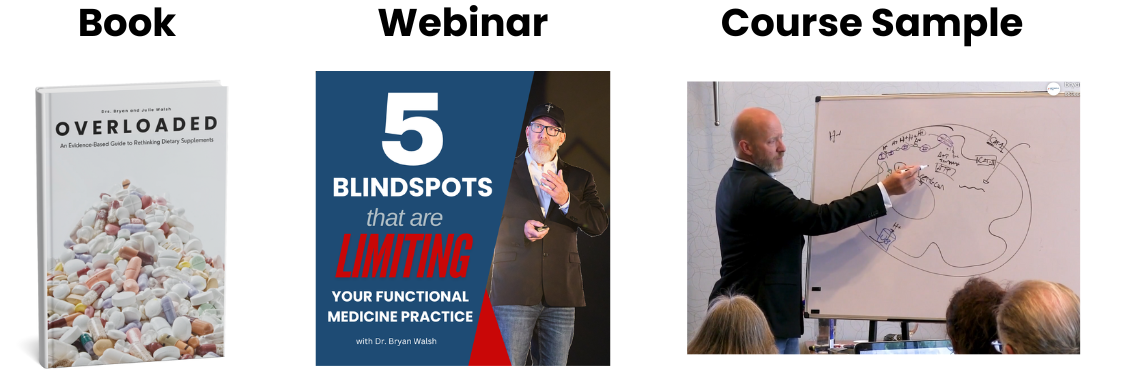Is Acid to Blame?
May 3
/
Drs. Bryan & Julie Walsh
Can You Be Too Acidic?
We’ve all heard it…
“Everyone is acidic.”
“We all need to alkalize.”
“When people alkalize their body, then and only then, can they start healing.”
If you’re skeptical by nature, like we are, you chalked this up as watered-down, pseudo-scientific, nutrition babble.
But guess what, there IS something to this (kind of).
We did what we do best – looked to the scientific literature to see if this had any validity.
Keep reading for what we found...
Does Food Make You Too Acidic?
The acid/alkaline story in circulation is based more on rumor than science and is missing the important nuances to navigate this topic with accuracy.
However, it is correct in the premise that foods we eat can influence the acid load on our body appears to be valid.
According to the scientific literature, the foods we eat can have a significant effect on how much acid or alkali (base) the body produces.
Foods may have their own pH, but that's not how they impact our pH. Instead, it is what they cause the body to make that is significant.
Specifically, if someone eats too much protein, or especially phosphorus, we make more acid in the body. If we eat more calcium, magnesium, or potassium, we make more alkali, or base, in the body.
As with most things, it is about balance. Something that most people in industrialized nations aren’t very good at, dietarily speaking anyway.
Chances are, most of your patients or clients are eating either too much protein, too much processed food, or both. Eating this way is a guaranteed way to increase phosphorus intake, which will increase the acid load on the body.
And all this acid has consequences.
What Happens If You are Too Acidic?
It turns out that there is pretty significant evidence that an increased acid load on the body, over time, is associated with a number of chronic conditions. These include muscle breakdown, especially fast-twitch muscle, insulin resistance, hypertension, osteoporosis, kidney stones, stroke, and chronic kidney disease.
Notice these are all chronic conditions that occur over years, if not decades. This is because the body has a robust buffering system that compensates for an excess acid load. Over time, however, buffering against an acid load has its consequences and slowly deteriorates certain aspects of the body – bone and muscle, for example – which is how it can lead to chronic disease.
How to Measure Acidity
There are a few ways to measure acidity in your body. The most common suggestion is through urinalysis. Though according to scientific literature, this is not accurate. In fact, the more alkaline someone is, the less accurate it is.
Another way is through blood testing. However, with buffering systems in place, there is the potential of normal markers despite an acidic environment.
The first step is to measure their Potential Renal Acid Load (PRAL) score.
What is the PRAL Score?
The PRAL score, or Potential Renal Acid Load score, is the potential acid load on the kidneys that comes from diet. As a clinician, you can use this score to determine whether or not someone has an increased acid burden on their body.
While there are many calculators online to determine PRAL score, none are perfect, some have accuracy issues, or they are based on PRAL per meal rather than a longer window of time.
How to Determine PRAL Score
Simply have a patient or client track what they eat for 5-7 days to get an average of how many grams of protein they eat each day, and milligrams they eat of phosphorus, calcium, magnesium, and potassium, then enter those values into the following equation. The more positive the score, the more acid load they have, and the more negative the score, the more alkali load they have.
Here's the equation:
Here's the equation:
PRAL = 0.49 x protein (g/day) + 0.037 x phosphorus (mg/d) – 0.021 x potassium (mg/day) – 0.026 magnesium (mg/day) – 0.013 x calcium (mg/day)
For illustration purposes, let’s say someone consumed 200 grams of protein a day, on average, and 1,600mg, 1,800mg, 300mg, and 1,000mg of phosphorus, potassium, magnesium, and calcium respectively.
Their PRAL score would be a whopping +98.6, which indicates a significant acid load on the body that over the years, may contribute to certain chronic diseases. A good PRAL target score is zero, or even a slightly negative score.
What to do if PRAL Score is High
If your score is positive, you need to eat fewer foods that are acidic and more foods that are alkaline. Or, in other words, eat more foods that contain calcium, magnesium, and potassium, and fewer foods that contain phosphorus.
There are charts available online that show you what these foods are, but there is a problem with them. They are based on 100-gram portions of food, which most people do not eat. For example, when is the last time you ate 100 grams of parmesan cheese? What about 100 grams of parsley?
The better, more accurate way to find out what foods to eat to lower your PRAL score is to look at foods based on portion sizes.
This training is one of many inside of Clinician's Code Foundation Professional Certificate, our clinical mentorship. With it, you can access all of our research on how to accurately assess and address acidity, including:
-
An Expert’s Observation on the Influence of Progesterone on pH
-
How to Assess ph using a standard blood marker
-
Full Acid/Alkaline Food Guide (Based on Portion Sizes)
-
Our Custom PracticeUP Playbook, A Step-By-Step Guide to Evaluating Acidity in your Patients
Not into knowing all that? We’ve put together a Beginners Guide to Measuring Acidity in Your Diet for you below.
Want our beginners guide to measuring acidity in your diet?
Grab our free guide today and learn the PRAL score of 30 common foods (based on portion sizes).
100%
FREE
30
FOODS

Get Free Functional Medicine Education
Thank you!
Policy Pages
Learn the PRAL Score of 30 Common Foods
(Based on Portion Sizes)
And get started evaluating your diet today!
Enter your email address below to subscribe to our mailing list and get the guide free!
Thank you!
Join our mailing list
Get updates and special offers right in your mailbox.
Thank you!
Grab our free Reactive Hypoglycemia Playbook
Enter your email address below to subscribe to our mailing list and get the guide free!
Thank you!
See Inside the Program
Fill in your information below and we'll give you access to a free inside look into the entire program.
Thank you!
Get Free Stuff!

Fill in your information below and we'll give you our 100+ page eBook "Overloaded", our one hour "State of the Industry" webinar, and a sneak peek into one of our courses.
